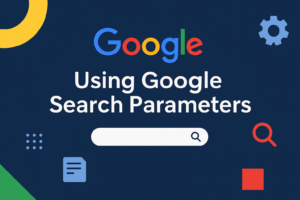User experience (UX) is a crucial element of any successful website. It encompasses everything from design and layout to usability and speed, directly impacting how users interact with your site. Good UX doesn’t just enhance the user experience – it also influences SEO, conversions, and overall business growth. In this article, we’ll compare two competing businesses – IKEA, which offers an outstanding UX, and House Things, which falls short in several areas – to illustrate why UX matters for SEO and how it can affect your business rankings.
The UX-SEO Connection: Why Google Cares About User Experience
Google’s ranking algorithm is becoming increasingly focused on user satisfaction, with factors like Core Web Vitals, mobile-friendliness, and engagement metrics gaining more importance.
Imagine you’re Google for a moment – your job is to deliver the best possible results to your users when they search for something. You want your users (your customers) to be happy with the pages they land on. If Google starts to see signals that users are not satisfied with a particular site, like high bounce rates or short session times, it means the site isn’t meeting the user’s expectations or intent. Essentially, the site isn’t giving the users what they came for. If that happens, Google will quickly recognise that the page isn’t delivering value and will prioritise another website that provides a better experience, offering users more of what they’re looking for.
This is why a well-designed website with great UX – think fast load times, smooth navigation, mobile optimisation, high engagement, and low bounce rates – sends strong signals to Google that the site is valuable. After all, Google’s goal is to satisfy its users by showing them the most relevant and helpful results. If a page truly meets a user’s needs, both the user and the search engine benefit. That’s the essence of people-first SEO.
Case Study: IKEA vs. House Things
Let’s dive deeper into the specifics by comparing IKEA (a strong UX performer) with House Things (which currently struggles in several key areas), both operating in the competitive online retail space.
Website Speed & Performance

IKEA:
The IKEA website consistently demonstrates excellent performance, with pages loading swiftly and efficiently, typically under 2 seconds. This speed ensures that users remain engaged from the moment they land on the page, reducing bounce rates and encouraging longer sessions.

House Things
In contrast, House Things shows signs of sluggish performance, with a loading time of around 4 seconds. Extended load times not only frustrate visitors but also trigger higher bounce rates. Slow performance can negatively impact SEO, as search engines favor websites that deliver immediate value to their users.

- Image 1, IKEA: Uses a readable font size and colour, with accordions to minimise scrolling and keep information tidy and well-organised.
- Image 2, House Things: White space feels more like dead space than purposeful design. The lack of accordions means users have to scroll through large blocks of text. The combination of a chat function and pop-up messages like “someone else just bought…” creates visual clutter and distracts from the main content.
Mobile-Friendliness & Responsiveness
IKEA:
Designed with mobile users in mind, IKEA is fully responsive. Whether accessed via a smartphone or tablet, the website maintains a clean layout, readable text, and accessible navigation, ensuring a seamless experience across devices.
House Things:
The mobile experience on House Things leaves much to be desired. Users often encounter issues such as misaligned elements (see the blue hearts across the navigation on the screenshot below) and small, hard-to-read text. This lack of responsiveness not only diminishes user satisfaction but also hurts the site’s mobile SEO ranking.
Navigation & User Journey

IKEA:
IKEA’s website boasts a clear, intuitive navigation system. Menus are well-organised, and users can quickly locate products or information without unnecessary clicks. This smooth user journey reinforces trust and guides visitors efficiently toward conversion actions.
House Things:
The navigational structure on House Things appears cluttered and inconsistent. Users may struggle to find key information or complete tasks like product searches and purchases.
For example, when clicking on ‘Sofas & Armchairs’ on IKEA’s website, you are presented with the subcategories that naturally fall under ‘Sofas & Armchairs,’ such as sofa beds, lounges and ottomans. When clicking on ‘Living’ on House Things’s website, you are presented with storage, tables and towels, on top of lounges and sofas. A confusing layout can lead to user frustration, which in turn harms engagement metrics and SEO performance.
Content Readability & Layout

IKEA:
With a focus on clean design and legibility, IKEA presents its content in an easily digestible format. Clear headings, ample white space, and high-quality imagery combine to create an engaging visual hierarchy that enhances readability.

House Things:
House Things, on the other hand, suffers from a more cluttered design. Large blocks of text, inconsistent formatting, and a lack of visual hierarchy make it harder for users to process information quickly. Poor content readability can lead to higher bounce rates, which adversely affects SEO.
Conversion Optimisation

IKEA:
Conversion is streamlined on IKEA’s platform. Clear calls-to-action (CTAs) and a straightforward checkout process reduce friction, enabling users to complete their purchases efficiently. When reviewing a product, one of the first things you will see is its availability at your chosen location. You will also be presented with the colour options at the top of the page. This positive user experience not only boosts conversion rates but also sends strong engagement signals to search engines.
House Things:
In contrast, House Things features a more convoluted conversion path. There is no review rating summary at the top of the page, no colour options, no information about availability or shipping costs, often resulting in abandoned carts and lost sales. This suboptimal conversion funnel further detracts from the site’s overall SEO performance.
The Results: Who Wins the SEO & Business Battle?

The data is clear: IKEA’s commitment to a superior user experience results in lower bounce rates, longer dwell times, and higher conversion rates. These factors collectively enhance its SEO performance and help it rank higher in search results. Conversely, House Things struggles with outdated design elements and technical issues that hinder both user satisfaction and SEO outcomes.
How to Improve Your Website’s UX for Better SEO & Rankings
Improving your website’s UX can have a significant impact on your SEO and overall business performance. Here are a few strategies inspired by the comparison:
- Improve Site Speed:
- Run PageSpeed Insights; compress images (use WebP), minify code, and enable lazy loading.
- Leverage browser caching and a CDN; optimise third-party scripts.
- Enhance Mobile Experience:
- Implement responsive design and a sticky header for consistent navigation.
- Ensure tap-friendly buttons and test on multiple devices; optimize font sizes.
- Simplify Navigation:
- Organise menus logically with clear categories and use breadcrumb trails.
- Incorporate a sticky header, intuitive icons, and a prominent search bar.
- Write Clear, Engaging Content:
- Use clear headings, bullet points, and short paragraphs.
- Integrate multimedia elements, maintain a clean layout, and perform regular content audits.
- Optimise Conversion Paths:
- Simplify forms, employ sticky CTAs, and use progress indicators.
- Streamline the checkout process, highlight the value proposition, and conduct A/B testing.
Conclusion: UX as a Competitive Advantage
In today’s digital landscape, UX is not merely a design choice – it’s a strategic business imperative. The stark contrast between IKEA and House Things clearly demonstrates how a superior user experience can drive better SEO performance and ultimately lead to greater business success. If you’re looking to improve your website’s rankings and conversions, a thorough UX audit is a critical first step in identifying and addressing issues that may be holding your site back.
By focusing on a seamless, engaging user experience, you can not only satisfy your customers but also signal to search engines that your website is a valuable resource, ensuring you remain competitive in today’s rapidly evolving digital marketplace.




